Discovering Diwali in the heart of Dubai
How much do you know about Diwali? I was pretty clueless until I spent an evening in the historic area of Dubai called Bur Dubai during the festivities. My eyes were opened to the traditions, the meaning, the rituals, the excitement and, of course, the food. Join me on that journey…
It’s calm crossing the Dubai Creek on an abra but this is swiftly left behind as we land at the water taxi station and enter the Fabric Souk in Bur Dubai. This lively hub of shoppers and shop keepers is particularly busy and the frenzy intensifies as we dive into a narrow corridor. Small, shopfronts are open on either side displaying a bright array of goods, stacked in Jenga-like towers without a single inch of space to spare. Fluorescent strip lights make the bright colours even more dazzling.
We are led through these crowded paths by my friends Arva and Farida from Frying Pan Adventures. We’re in this part of Dubai because of its trading links to India which merchants from the country have used as a trading base since the mid-19th century. After the discovery of oil and economic boom in the 1950s, the Indian population grew and businesses thrived, particularly in Bur Dubai. These days Dubai is home to 200 nationalities of expats, but the majority are from India and many still live in this traditional heartland. As Diwali is the most important festival of the year for most people in India we are in the right place to find out more.


As we shuffle through the corridor barely wide enough for two people to pass there is so much to take in. Arva shows us what is being sold for the celebrations and tries to explain, in a nutshell, what Diwali is all about, which is not easy. There are innumerable dramatic, mystical tales in Hindu scripture and Diwali commemorates many important events. Among them, Lord Rama returns from exile, Lord Krishna kills an evil demon, the Goddess Lakshmi is born from the churning of the cosmic ocean of milk; it marks the start of the Hindu New Year and celebrates these new beginnings, the triumph of good over evil, light over darkness, and knowledge over ignorance.
Flower shops are doing a roaring trade and men pile garlands of vivid, orange marigolds into blue plastic bags. Beautiful strings (mala or haar) of jasmine and roses dangle from above and their scent mingles with the buttery smell of ghee and incense. Flowers have a role in many parts of life in India and are woven into art and literature. ‘Puja’ is the Hindu worship ritual meaning ‘flower act’ and there is a particular type of flower linked to each god.
Yellow flowers are also scattered over prasad which are small plates of food and drink that are being sold. An apple, an orange, a bottle of milk and some sweets; gulab jamun or laddus are typical. They are taken to the temple as an offering and are blessed.
Diwali or or Deepavali is also called the festival of lights and people are buying little terracotta dishes or diyas are filled with ghee (clarified butter) or oil and a wick to be lit in the temple or at home. Deepavali is from Sanskrit and means a row of lights. One Hindu temple is actually over our heads (next to the Sikh Gurdwara) and worshippers climb stairs at one end of the building and come down at the other in a constant, one-way-system procession. The other temple is in a nearby courtyard.
We leave the alleyways and head out into the streets. Coloured lights hang in streams from every single balcony and families wander along the pavements wearing brilliant robes and saris.
At one entrance Arva speaks into the intercom and invites us up into an apartment block. A hush descends; flames flicker outside every doorway and rangoli cover parts of the floor. These are artistic designs made of brightly coloured powder (or sand, ground rice or flowers). The patterns are often passed down from one generation to another.

Back out onto the streets there is excitement as a robed man with a large drum appears and starts a frenetic beat. A crowd gathers quickly; some men catapult out and start dancing energetically, pounding their feet, bowing low to the ground, waving their arms and clapping. Most things in Dubai need official permission and I get the feeling that this spontaneous, public merrymaking is not quite within approval which seems to add another layer of illicit pleasure. The drummer disappears suddenly, to another corner with other eager dancers no doubt.
As we pass a glass-walled jewellery shop, the people inside invite us in to join their family celebrations. A small altar contains the remains of offerings and everyone sits crossed legged on rugs on the floor enjoying a shared feast. We’re welcomed with drinks and sweets – it feels like such a privilege to experience this special festival through their warmth and generosity. A toddler is dressed in embroidered clothes and jewels that my children would have longed for when they were little.

The excitement on the streets has ramped up a notch as groups of teenage boys run around tossing fire crackers onto the pavements and disappearing into the smoke when a police car appears*.
Families are out there too and a father throws a fire cracker at the feet of his young daughter. She laughs with joy but I’m appalled; years of ‘never play with fireworks’ messages on Blue Peter before Bonfire night make me unable to stop worrying. They are oblivious.
Maya Angelou said “I want all my senses engaged. Let me absorb the world’s variety and uniqueness.” As we wandered back, I was reeling with impact of the evening’s experiences through sight, touch, scent, sound and taste. It’s something that has stayed with me ever since. It wasn’t just a massive eye opener into the world of people I lived parallel to. To quote Kant, “All our knowledge begins with the senses, proceeds then to the understanding, and ends with reason.” A night out in Bur Dubai during Diwali could be the answer to a lot of things these days.
Traditional Diwali food and sweets
Like all festivities, food is at the heart of the five days of Diwali. Savoury snacks are popular, mostly fried like samosas, vada, chakli, bonda, murukka and tikki. Also common are little flattened, spiced grains of rice called churwa or chivda. The types served varies depending on traditions within the family and which part of India they are from.
Arva from Frying Pan Adventures (who is not Hindu) says that on the savoury front most people offer snacks like churwa and she’s never had a main course that’s particularly associated with Diwali. Usually people bring out the fanciest and richest dishes but sweets are the most important.
The choice and volume is quite mind boggling with huge trays of them in shops or traditional homemade ones.
Friend Devina aka FooDee says “I’ve always had a sweet tooth, so Diwali conjures up images of an endless array of mithai (sweets). I love most mithais fairly equally, but I am extremely partial to ‘pedas**’, which you’ll find in any Indian sweet shop. They are usually round or oval, melt in your mouth, and a little thick and made with sugar and dried evaporated milk (khoya). Flavourings can be added to this, from saffron to cardamom and even chocolate. I’m salivating just thinking about it.”
 Some of the most popular sweets eaten at Diwali are:
Some of the most popular sweets eaten at Diwali are:
Besan laddu (or laddoo)
Made with gram flour or chickpea flour (called besan in Hindi) which is added to ghee (clarified butter) in a pan on the stove then stirred and toasted until it’s a golden colour. Sugar, nuts and cardamom are added to the paste and rolled into balls. Like many sweets at Diwali they can be garnished with nuts or edible silver leaves (chandi ka vark).
Pera or peda**
Khoya or Mawa are milk solids made by evaporating the moisture from the milk over heat very slowly. Sugar, and sometimes cardamom, is added once cooled and they are shaped into discs by hand or using decorated moulds to make pera. Khoya used to be made from scratch, reducing milk straight from the cow, but now people usually buy their milk solids or use milk powder.
Barfi
There are many different flavours and ingredients used to make barfi such as varieties of nuts, all kinds of fruits to flavour and fragrant spices. The base is a kind of fudge made with reduced condensed milk and sugar. At Diwali they are usually cut into diamond-shapes and decorated with vark. This edible foil usually made from silver or gold and has been used since ancient times due to the Ayurvedic practice of using precious metals for medicinal reasons.
These types of sweets are more likely to be homemade:
Gulab jamun
One of the most popular sweets, these are deep fried balls of dough (sort of mini-doughnuts) made with khoya and soaked in fragrant syrup usually flavoured with rose and cardamom.
Rasmalai and Rasgulla
The base of these soft spongy discs is quite similar. Lemon juice is added to saffron-scented milk to make curds which is strained of moisture and made into a paste called chena with cornflour. They are boiled in sugar syrup. Rasmalai are are served with a thick, nutty, scented milk-syrup.

Ghughra
Chirag who gave me his Mum’s homemade sweets (pictured above) says that the little crescent shaped one is a must on the Diwali table. It’s called gujiya in Hindi and ghughra in his mother tongue of Gujurati. He compares it to a tiny sweet fatayer, fried to give the outside a nice crunch with a rich filling that is supposed to give you energy and brain power (and maybe, a tad of cholesterol).
This rich filling is usually made with ground nuts and dried fruits, sugar, spices like cardamon or cloves, mawa/khoya and semolina.
This is just the tip of the Indian sweets iceburg though. If you have chance to visit an Indian sweet shop, ask for advice or, if you’re really lucky, seize the opportunity if invited to someone’s home for Diwali (post COVID). I found Cook with Manali blog a really good resource for explaining how to make homemade sweets.

This all happened in 2015 at the invitation of my dear friends Arva and Farida from the fantastic food tour company Frying Pan Adventures. It took me a while to process the whole experience and I felt too overwhelmed to write about it feeling I couldn’t do it justice. With so much going on that night, I wasn’t very focused on my photography (which I don’t regret) but my images are not great in quality or in capturing the magic of the evening. With so many people unable to celebrate Diwali the way they’d like to this year due to COVID, I felt compelled to share this story, especially as we all need a bit more openness and understanding at this time.
I’d love to hear what you think. And if anyone wants to share their knowledge of the vast ocean of Indian sweets please comment below.
*The police wouldn’t arrest them, probably just give a gentle warning.
Trackbacks
Comments are closed.






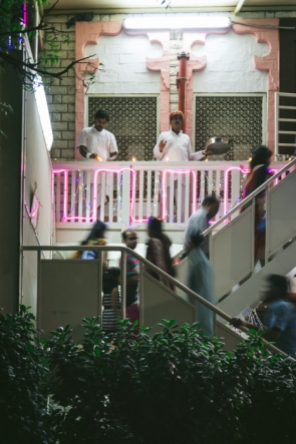











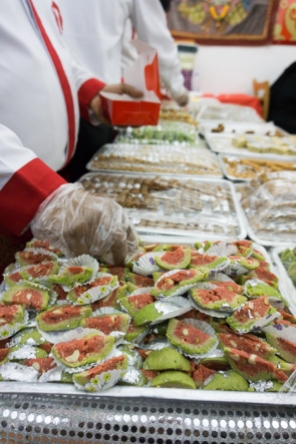



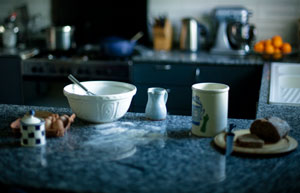







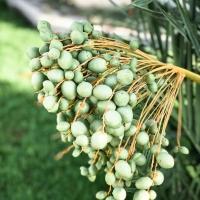

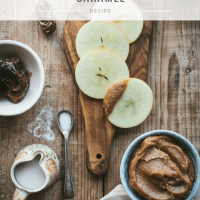
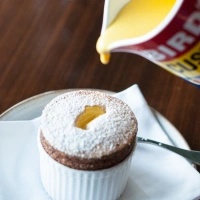
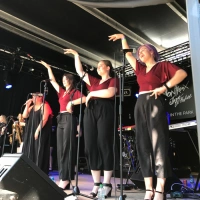
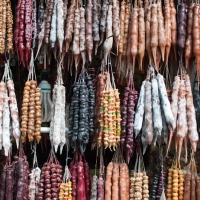
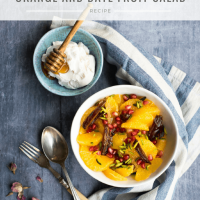




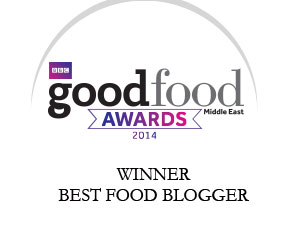



What a great trip, fabulous photos, and good to learn more about Diwali. Thank you!
Thank you – I was so ignorant before this experience and it led me to investigate and learn much more about Hindu culture.
Wonderful post Sally! Your images of Bur Dubai & Meena Bazaar brought back some some wonderful memories of our lives as expats in Dubai for over two decades! Ah beautiful Dubai and a lovely Diwali post.
Thank you Shy. That means a lot. I hope you and your family are doing well where you are now. Take care
Hey Sally we are now back in Toronto this past year…closer to our son..yes thanks all well and hope the same with you! Take care and stay safe!
And you Shy
This is so beautifully written, it is amazing how you capture the moments in words and in pictures. I always love reading your stories
Oh Preethi – thanks so much for your kind words. Really so very much appreciated. My day is made. Take care.
I now wish I had eaten more sweets haha. This year I also had a new variation of laddoo at my family’s house. Our lovely house help who stays with us (and spoils me silly with her food) made laddoo with sooji (semolina) that I hadn’t really had before, so that was pretty interesting!
I’ve been to Bombay for Diwali as well, and it’s such a treat. Maybe next year, I’ll return – travel restrictions permitting!
I would love to go to Bombay for Diwali – room for one more?!
Thank you for a fascinating and colourful read!
Thanks for your kind words. I hope it’s an insight into a completely different experience.I think the world would be a better place if we all took the time to find out about other people’s lives. Don’t you?
I absolutely do. But unfortunately I think there are two categories of people: those that look outwards, and those that look inwards. Sigh.
I know quite a bit about Diwali as some of my closest friends in high school were Sikhs. I used to love being invited to their celebrations, absorbing the culture and munching those delicious foods. Barfi was always my favourite sweet. I have never visited Dubai but I would love too one day, your beautiful photos show a side of Dubai which is never seen in the media.
So interesting to hear about your experience of Diwali. And yes there are so many different sides to Dubai due to the diverse amount of people living here. Everyone brings their own special contribution to the city. Loads of different parts to explore.
I love your writing – so descriptive, it really made me feel like I was right there with you!
Thanks Katie. It was a special night that is such a vivid and lasting memory.
As is so often the case, I feel like I’m experiencing these moments with you! Lovely writing!
Thank you so much Kavey. Beaming now after reading your kind words.